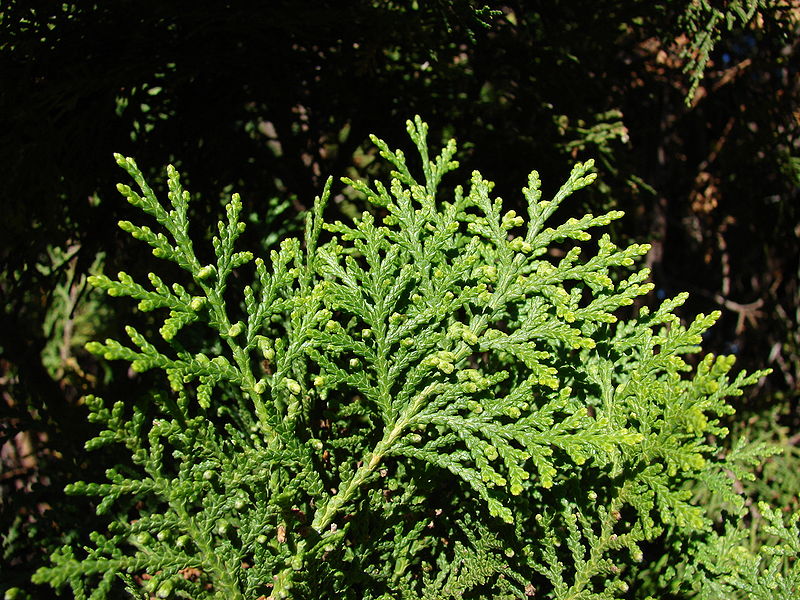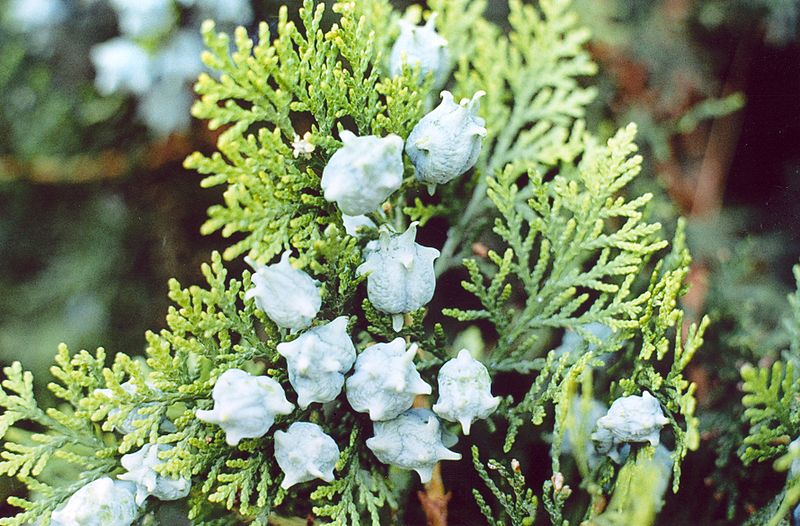| PSC 2620: Woody Trees and Shrub | Course Home | Week 12 |
Platycladus or Thuja orientalis - Oriental Arborvitae
Plant Viewer
 |
 |
| The foliage is composed of tiny overlapping triangular scale-like leaves. They are a green color, but may discolor in the winter. Image: Forest & Kim Starr | The fruit is composed of overlapping scales. It is blue-green in color and shaped and ovate in shape with protruding horns. Image: Daniel Fuchs |
Plant Description
Thuja orientalis (recently reclassified as Platycladus orientalis), or Oriental Arborvitae, is a large shrub or small tree, growing 18-25 feet tall and 10-15 feet wide. It has a dense, pyramidal shape, but often exhibits a more open and spreading form. It prefers moist, well-drained soil and full sun. The bark is gray with brown highlights and has thin but deep furrows. The bark has a rugged charm about it, especially on large mature specimens. Younger bark is a reddish-brown color and exfoliates in long, thin strips.
The foliage is true green to yellow-green in color and composed of small triangular overlapping scale-like needles. They are closely pressed to the stems. In the winter the foliage can discolor slightly. The fruit is composed of powder blue-green, fleshy, overlapping scales. They are ovoid in shape and have several irregular horn-like projections on them.
Landscape Use
Larger cultivars can be used as a specimen tree. Most often it is used as a hedge or a screen. Somewhat over-used in the landscape, it is less popular than it used to be.
Points of Interest
Like Thuja occidentalis, Thuja orientalis is a popular winter food for deer. The winter can take a particularly harsh toll on Oriental Arborvitae. The snow can cause severe branch breakage and should be wrapped to protect the limbs and the form. Winter winds can also quickly dry out the foliage.
Notable Cultivars
Aurea Nana
A small and compact cultivar with an upright rounded form with yellow to yellow-green foliage. It grows 5-8 feet tall.